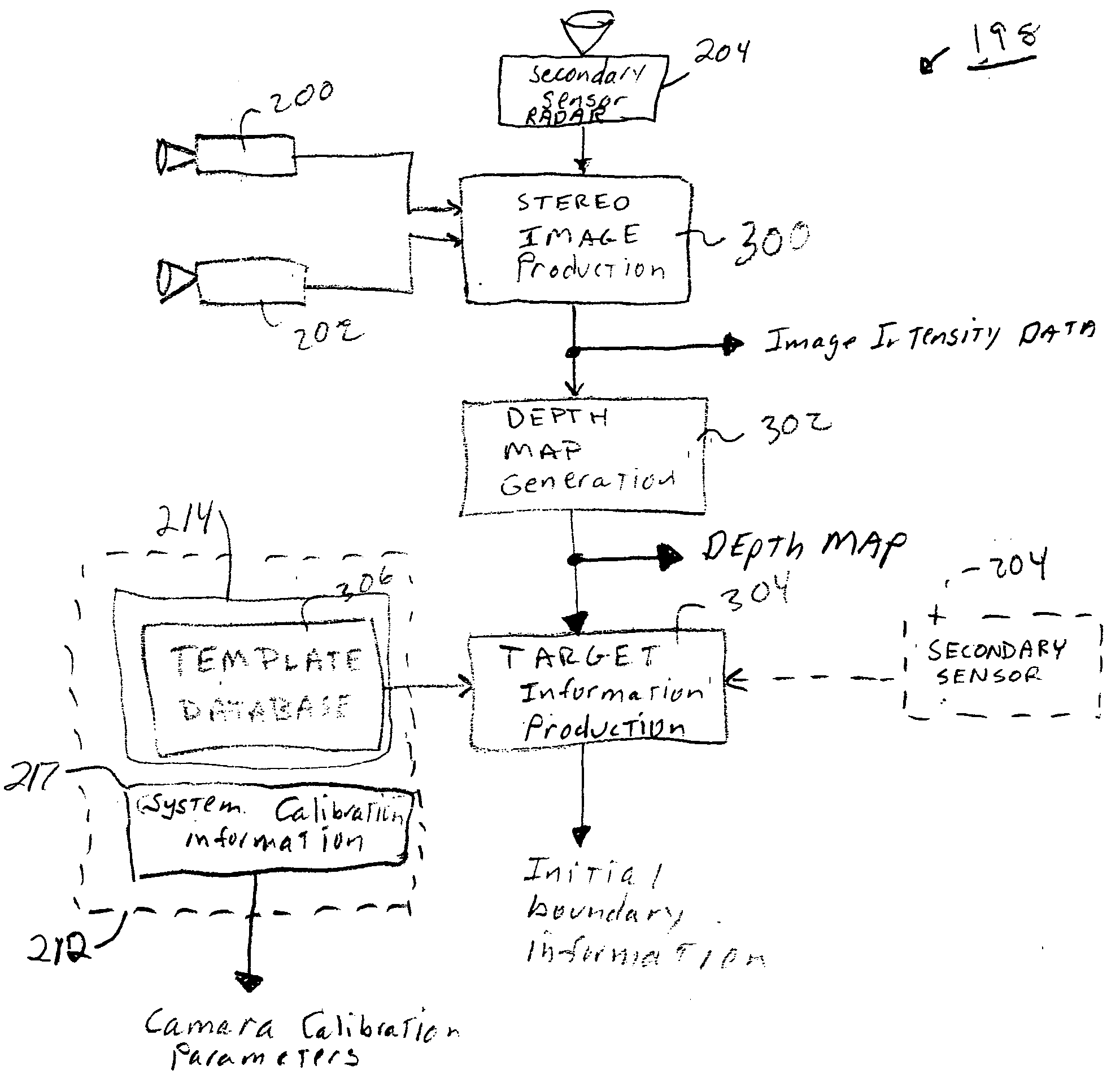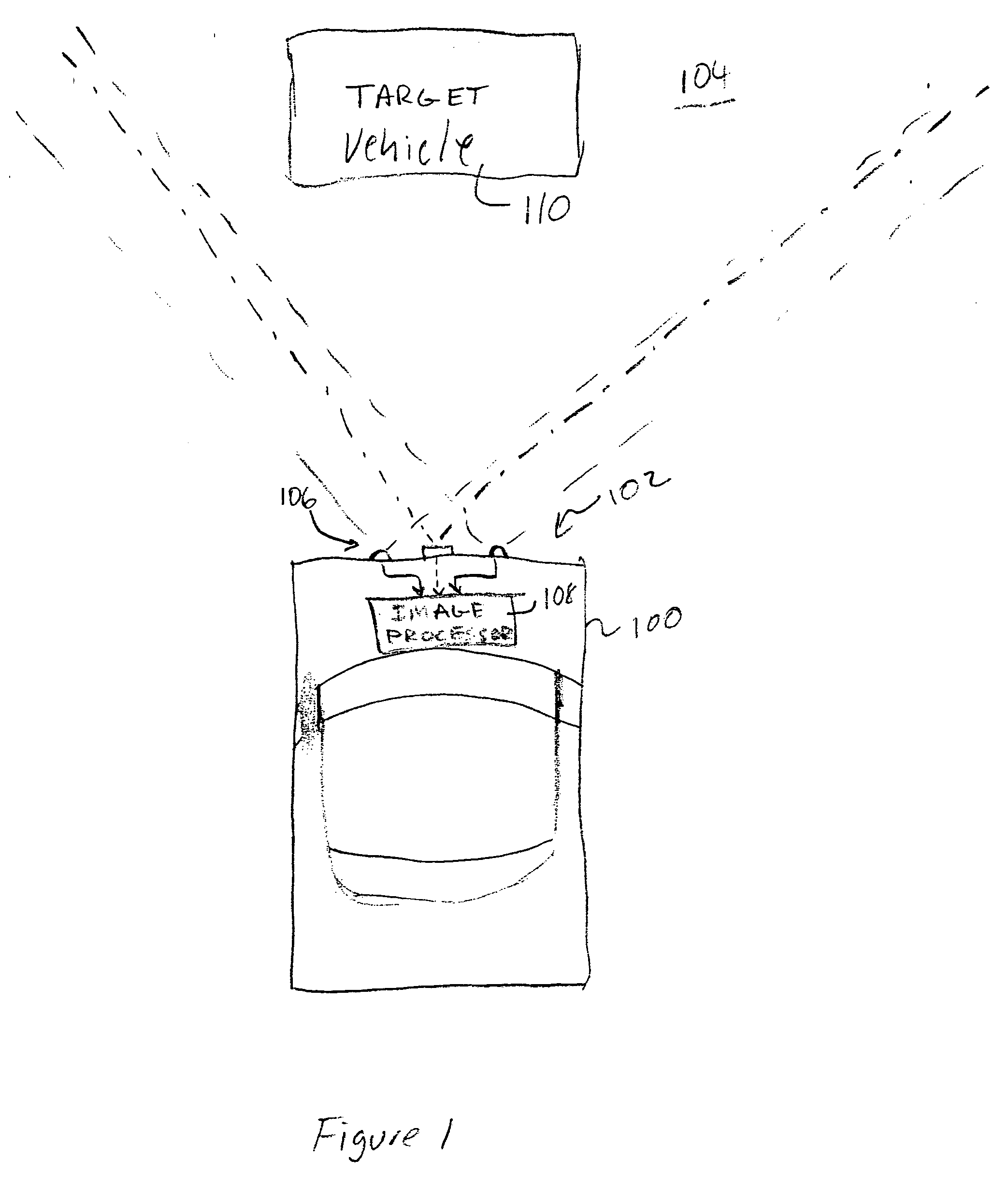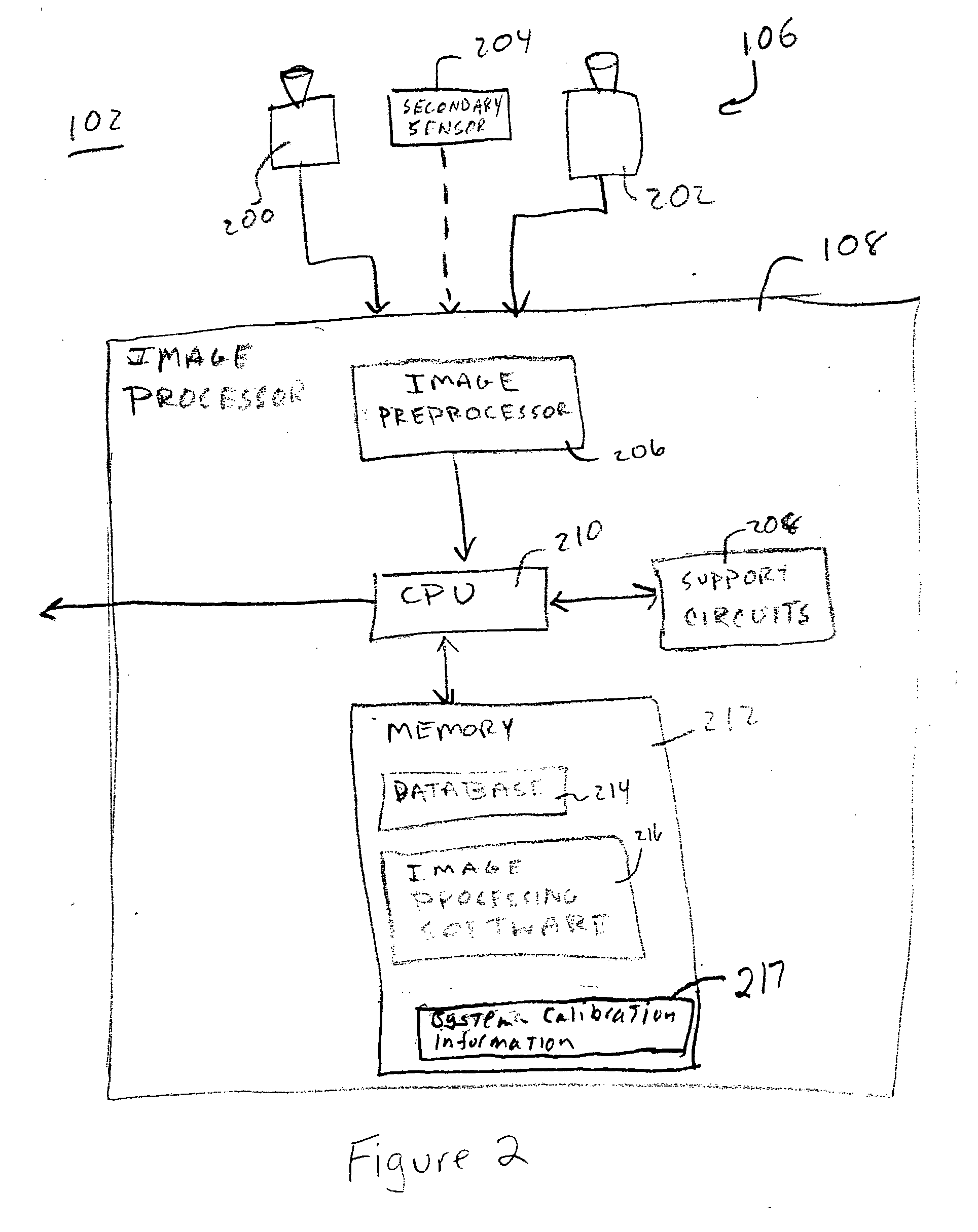Method and apparatus for refining target position and size estimates using image and depth data
a target position and depth data technology, applied in image analysis, instruments, computing, etc., can solve the problems of usually not providing accurate information about the target or its movement, and achieve the effect of accurate identifying edges, improving target size estimates, and improving target position information
- Summary
- Abstract
- Description
- Claims
- Application Information
AI Technical Summary
Benefits of technology
Problems solved by technology
Method used
Image
Examples
Embodiment Construction
[0023]FIG. 1 depicts a host vehicle 100 having a vision system 102 that images a scene 104 that is in front of the host vehicle 100. Other applications of the vision system 102 may image scenes that are behind or to the side of the host vehicle 100. The vision system 102 includes a sensor array 106 that is coupled to an image processor 108. The sensor array 106 has a field of view that includes a target 110. In practice, the sensor array's field of view may be ±12 meters horizontally (e.g., approximately 3 traffic lanes), ±3 meters vertically, and approximately 40 meters deep.
[0024] Referring now to FIG. 2, the sensor array 106 beneficially includes a pair of optical cameras 200 and 202 and a radar-based secondary sensor 204. The cameras 200 and 202 are physically separated at fixed locations to enable stereographic imaging. While the cameras 200 and 202 will typically operate in the visible wavelengths, the cameras may be augmented with infrared sensors, or, in certain application...
PUM
 Login to View More
Login to View More Abstract
Description
Claims
Application Information
 Login to View More
Login to View More - R&D
- Intellectual Property
- Life Sciences
- Materials
- Tech Scout
- Unparalleled Data Quality
- Higher Quality Content
- 60% Fewer Hallucinations
Browse by: Latest US Patents, China's latest patents, Technical Efficacy Thesaurus, Application Domain, Technology Topic, Popular Technical Reports.
© 2025 PatSnap. All rights reserved.Legal|Privacy policy|Modern Slavery Act Transparency Statement|Sitemap|About US| Contact US: help@patsnap.com



